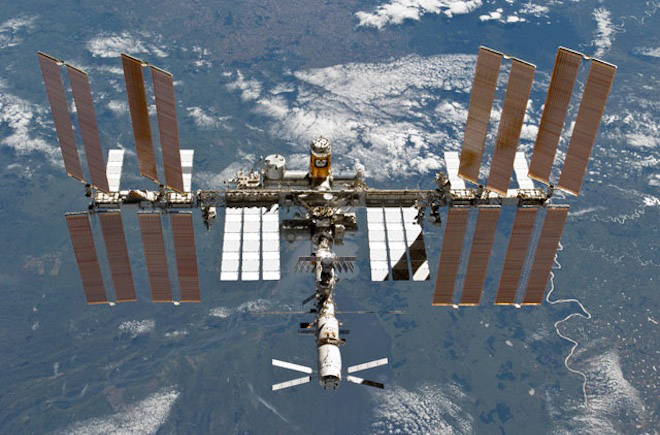Updated 12:52 p.m. ET, Friday, September 16
It looks as though the International Space Station won’t have to be temporarily abandoned after all
NASA announced late Thursday that it plans to send an American astronaut up on a Russian Soyuz spacecraft, along with two Russian cosmonauts, on Nov. 14, to ensure that the station remains continuously crewed.
That’s a reassuring turn of events in the wake of an August 24 crash of an unmanned Soyuz rocket shortly after launch.
In the immediate aftermath of that crash, the Russian Space Agency suspended all Soyuz flights while it investigated the cause and NASA noted it was highly likely the Space Station would have to be temporarily de-crewed and piloted remotely from the ground here on Earth, as the Soyuz is currently the only means of transportation for getting astronauts into space.
But Thursday, NASA issued a press release saying Soyuz crewed spaceflight was a go again after reviewing findings of the Russian Space Agency’s investigation, which had concluded that a freak manufacturing flaw in a gas line was the primary cause of the crash.
The Russians had originally set the date to resume crewed Soyuz flights for Nov. 12, but NASA thinks two days later would provide a better launch window.
“Our top priority is the safety of our crew members. The plan approved today, coupled with the conditions on orbit, allow the partnership to support this priority while ensuring astronauts will continue to live and work on the station uninterrupted,” said International Space Station Program Manager Michael Suffredini in a statement.
“Our Russian colleagues have completed an amazing amount of work in a very short time to determine root cause and develop a recovery plan that allows for a safe return to flight,” he added.
Still, NASA noted that the schedule could still be adjusted to a later date to “reflect minor changes in vehicle processing timelines. ”
In any case, the decision is great news for the private spaceflight company SpaceX, which planned to make history by docking its Dragon capsule with the space station on November 30, the first such commercial spacecraft visit of its kind. Following the Aug. 24 Soyuz crash, the company had worried that its mission would be delayed, as there wouldn’t be any astronauts aboard the station to receive the craft, but according to NASA’s current launch schedule, its still a go for November 30.
Meanwhile, another Soyuz landed safely in Kazakhstan on Friday, carrying NASA astronaut Ron Garan and two Russian cosmonauts, Andrey Borisenko and Alexander Samokutyaev, who had spent six months aboard the International Space Station. That leaves a current crew of three aboard the International Space Station, until mid-November, when they are due back as well.
Check out the video below of the safe Soyuz return on Friday.
Late update: Make that a narrowly safe return of the Soyuz craft on Friday. As CNET reports, the capsule “suffered an unexpected communications blackout just before plunging back into Earth’s atmosphere, completing a nail-biting descent in radio silence with repeated calls from flight controllers near Moscow going unanswered.”
The cause of the communications blackout remains to be determined, but it is certainly not a reassuring sign in the wake of NASA’s decision to greenlight new Soyuz launches. We’ve reached out to the agency to ask how, if at all, the incident will impact the new launch schedule and will update when we receive a response.
Second late update: A NASA spokesman tells Idea Lab that the agency currently has “no detailed information” on what caused the communications interruption as it is “so soon after launch.” The spokesman adds that “From the crew’s perspective, it was a normal landing.” There are currently no plans to adjust the upcoming Soyuz launch schedule from what was announced Thursday based on the communications system error.









